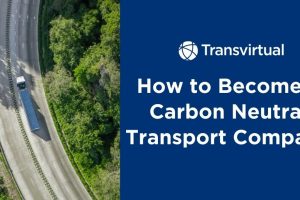Table of Contents
For transport and logistics businesses, sustainability isn’t just about compliance—it’s about efficiency, customer trust, and long-term profitability. Carbon neutral companies in Australia are setting new benchmarks by reducing greenhouse gas emissions and improving operational performance. For those in the freight and logistics sector this both achievable and rewarding.
What is Carbon Neutral?
A carbon neutral company balances the amount of carbon it emits with the amount it offsets or removes from the atmosphere. This involves three steps: measuring emissions, reducing them where possible, and offsetting the remainder.
In Australia, many businesses use carbon credits and carbon offset Australia programs to address unavoidable emissions. These offsets, often measured in tonnes, can include reforestation projects that store carbon, biodiversity protection, or renewable energy schemes.
How to Become a Carbon Neutral Company
Step 1: Measure Your Carbon Footprint
The journey starts with identifying where emissions come from. In logistics, key sources are:
Direct emissions from fuel use in vehicles and fleets
Energy and electricity consumption in depots and warehouses
Transport routes and delivery schedules
Supply chain operations
Employee travel and waste management
Step 2: Reduce Emissions
Reducing emissions is where logistics operators can make the biggest impact. Strategies include:
Route optimisation: Cutting unnecessary kilometres reduces fuel use and greenhouse gas emissions while improving delivery times and lowering costs.
Switch to renewable energy: Power depots and offices with clean energy providers.
Improve efficiency: Leverage automated dispatch, load planning, and smart scheduling to maximise resources.
Encourage sustainable practices: Support remote work, upgrade fleets to electric or hybrid vehicles, and improve water quality and waste management.
This focus on emissions reduction eliminates wasteful practices and maximises efficiency, directly benefiting profitability and sustainability.
Step 3: Offset Remaining Emissions
Even with reductions, some emissions are unavoidable. Through Australian carbon credit units (ACCUs), businesses can purchase offsets to compensate for their residual emissions. Verified carbon offset projects often include:
Reforestation and native forest regeneration that store carbon
Renewable energy developments like solar, wind, and hydro
Conservation and biodiversity projects that protect habitat, improve transparency, and provide co-benefits such as cultural benefits for Nations people and local communities
Offsets provide environmental and community benefits while balancing remaining emissions.
Step 4: Certification and Climate Active
Certification builds trust and ensures carbon neutral claims are legitimate under Australian consumer law. Climate Active certification, governed by the Clean Energy Regulator and the Australian government, provides guidance for businesses. Certified brands must undertake independent review processes to clarify governance, enhance confidence, and maintain consistent reporting.
Benefits for Logistics and Transport Businesses
Operational efficiency: Route optimisation and automation reduce emissions and costs.
Customer trust: More businesses want to partner with sustainable, certified organisations.
Future readiness: Stay compliant with environmental laws and industry guidance.
Employee engagement: Teams want to support climate action and climate-positive services.
Market differentiation: Being carbon neutral strengthens brand reputation and sustainability credentials.
Positive Project Outcomes
Carbon offset initiatives deliver wide-reaching benefits beyond carbon neutrality. They facilitate positive project outcomes in health, communities, land management, and biodiversity conservation. Many projects improve water quality, restore forests, create income for rural areas, and strengthen connections with Nations people. These outcomes not only address climate change but also support long-term environmental and social resilience.
Ready to Be More Sustainable?
For logistics and freight businesses, being carbon neutral is not just about carbon offset—it’s about rethinking business operations for a smarter, cleaner future. From route optimisation to purchasing Australian carbon credit units, every step reduces carbon emissions and facilitates positive project outcomes.



